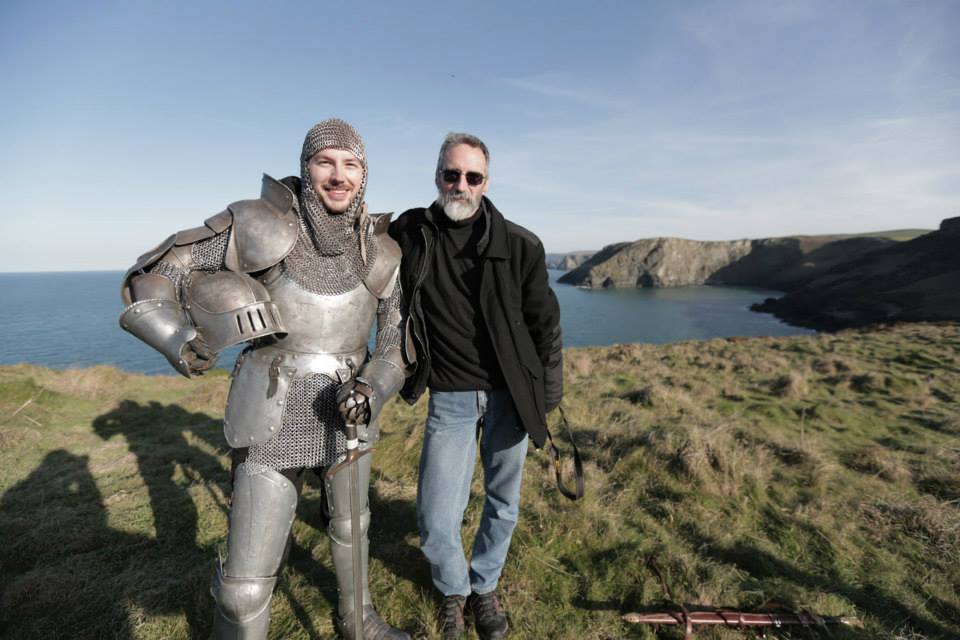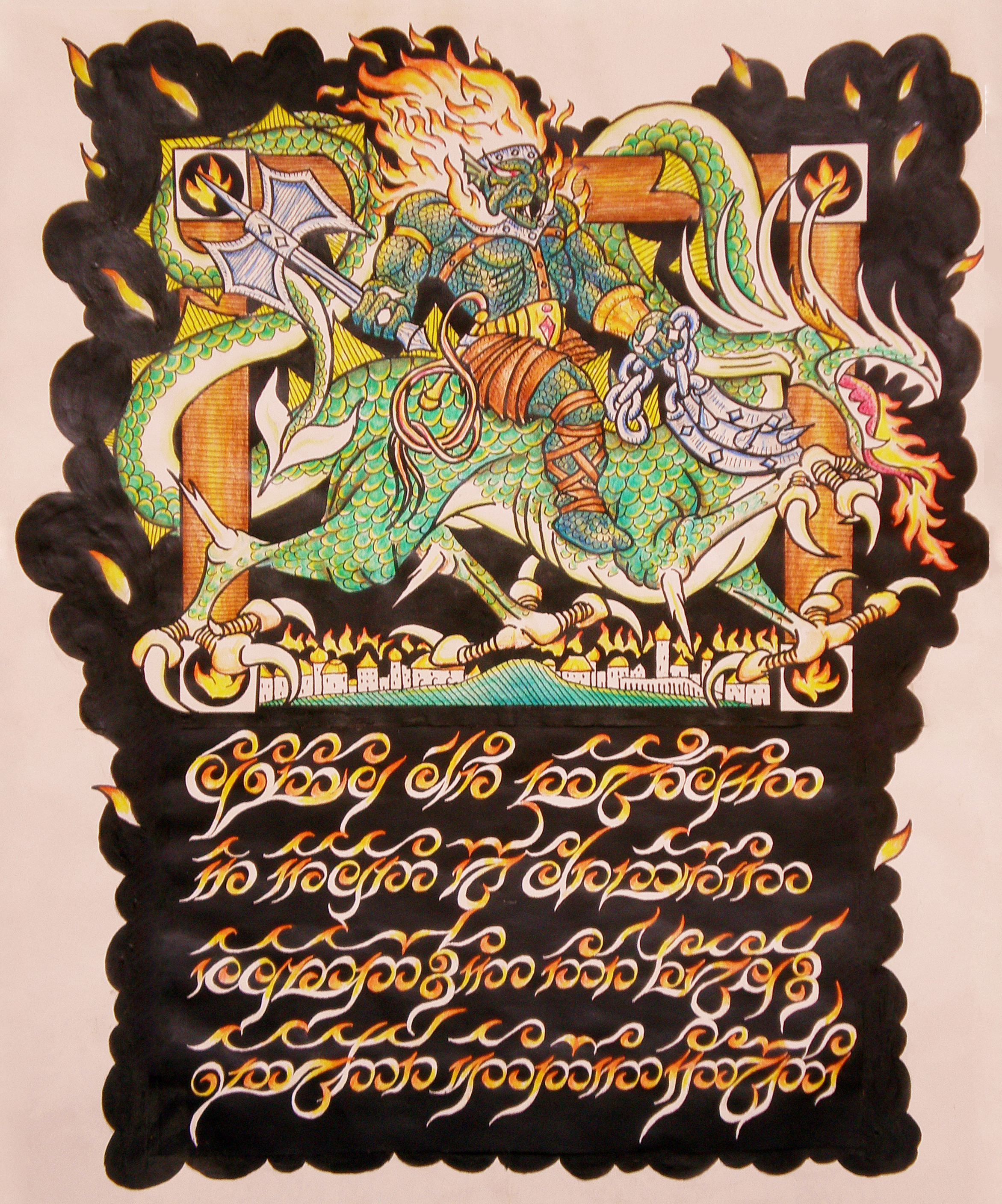|
The Book Of Lost Tales 1
''The Book of Lost Tales'' is a collection of early stories by the English writer J. R. R. Tolkien, published as the first two volumes of Christopher Tolkien's 12-volume series ''The History of Middle-earth'', in which he presents and analyses the manuscripts of those stories, which were the earliest form (begun in 1917) of the complex fictional myths that would eventually comprise ''The Silmarillion''. Each of the Tales is followed by notes and a detailed commentary by Christopher Tolkien. For publication the book was split into two volumes: ''The Book of Lost Tales 1'' (1983) and ''The Book of Lost Tales 2'' (1984), but this is simply an editorial division. Both volumes are separated into several "Lost Tales". Content Though they cover a broadly similar history, the ''Tales'' are very different from ''The Silmarillion''. Firstly the ''Tales'' are more complex and detailed than ''The Silmarillion'': they are written in a less formal but more archaic style and include many o ... [...More Info...] [...Related Items...] OR: [Wikipedia] [Google] [Baidu] |
John Howe (illustrator)
John Howe (born August 21, 1957) is a Canadian book illustrator and conceptual designer, best-known for his artwork of J. R. R. Tolkien's Middle-earth. One year after graduating from high school, he studied in a college in Strasbourg, France, then at the École des arts décoratifs in the same town. Howe and Tolkien artist Alan Lee served as chief conceptual designers for Peter Jackson's ''The Lord of the Rings'' movie trilogy. Howe illustrated the ''Lord of the Rings'' board game created by Reiner Knizia, and re-illustrated the maps of ''The Lord of the Rings'', ''The Hobbit'', and ''The Silmarillion'' in 1996–2003. His work includes images of mythological material such as the Old English epic poem ''Beowulf'' (including Knizia's board game '' Beowulf: The Legend''). Howe illustrated many books in the fantasy genre, such as those by Robin Hobb. He also contributed to the film adaptation of ''The Lion, the Witch, and the Wardrobe'' by C. S. Lewis, ''The Chronicles of Narnia ... [...More Info...] [...Related Items...] OR: [Wikipedia] [Google] [Baidu] |
Vanyar
In J. R. R. Tolkien's legendarium, the Elves or Quendi are a sundered (divided) people. They awoke at Cuiviénen on the continent of Middle-earth, where they were divided into three tribes: Minyar (the Firsts), Tatyar (the Seconds) and Nelyar (the Thirds). After some time, they were summoned by Oromë to live with the Valar in Valinor, on Aman. That summoning and the Great Journey that followed split the Elves into two main groups (and many minor ones), which were never fully reunited. Tolkien stated that the stories were made to create a world for his elvish languages, not the reverse. The Tolkien scholar Tom Shippey writes that ''The Silmarillion'' derived from the linguistic relationship between the two languages, Quenya and Sindarin, of the divided Elves. The Tolkien scholar Verlyn Flieger states that Tolkien used the Indo-European type of proto-language as his model. In her view, the sundering of the Elves reflects the progressive decline and fall in Middle-earth from it ... [...More Info...] [...Related Items...] OR: [Wikipedia] [Google] [Baidu] |
Gondolin
In Tolkien's legendarium, Gondolin was a secret city of Elves in the First Age of Middle-earth. The story of the Fall of Gondolin tells of the founding of the city; of the arrival there of Tuor, a prince of Men; of the betrayal of the city to Morgoth by the king's nephew, Maeglin; and of its subsequent catastrophic destruction by Morgoth's armies. It also relates the flight of the fugitives to the Havens of Sirion, the wedding of Tuor and Idril, and the childhood of their son Eärendil. Scholars have noted the presence of tank-like iron fighting machines in Morgoth's army in early versions of the story, written soon after Tolkien returned from the Battle of the Somme. They have likened the story of the Fall of Gondolin to the sack of Troy in ancient Greek literature, or to Virgil's ''Aeneid''; the role of Tuor's wife Idril has similarly been compared to that of Cassandra or Helen of Troy in accounts of the Trojan War. City Foundation The city of Gondolin"Tolkien explained ... [...More Info...] [...Related Items...] OR: [Wikipedia] [Google] [Baidu] |
The Fall Of Gondolin
J. R. R. Tolkien's ''The Fall of Gondolin'' is one of the stories which formed the basis for a section in his posthumously-published work, ''The Silmarillion'', with a version later appearing in ''The Book of Lost Tales''. In the narrative, Gondolin was founded by King Turgon in the First Age; the city was carefully hidden, enduring for centuries before being betrayed and destroyed. A stand-alone, book-length version of the story edited by Christopher Tolkien was published in 2018. ''The Fall of Gondolin'' is one of three stories from the First Age of Middle-earth that was published as a stand-alone book: the other two are ''Beren and LĂşthien'' and ''The Children of HĂşrin''. Text Origins Tolkien began writing the story that would become ''The Fall of Gondolin'' in 1917 in an army barracks on the back of a sheet of military marching music. It is the first traceable story of his Middle-earth legendarium that he wrote down on paper. While the first half of the story "ap ... [...More Info...] [...Related Items...] OR: [Wikipedia] [Google] [Baidu] |
Darkening Of Valinor
Darkening may refer to: * Darkening (ophthalmology), vision loss or weakness that occurs without an apparent lesion affecting the eye * Darkening of Tristram, an event taking place prior and during '' Diablo'', during which the main antagonist Diablo tried to break free of his imprisonment and laid siege to the town of Tristram. It is also the name of the time-limited event in ''Diablo III'' that marks the anniversary of the first game's original release. * Darkening of Valinor, the destruction of the Two Trees of Valinor in the fictional universe of J. R. R. Tolkien's Middle-earth * Gravity darkening, an astronomical phenomenon * Hydrogen darkening, a physical degradation of the optical properties of glass * Limb darkening, the diminishing of intensity in the image of a star as one moves from the center to the edge See also * Dark (other) * Darken (other) * Darker (other) * Darkness (other) * Lighting Lighting or illumination is t ... [...More Info...] [...Related Items...] OR: [Wikipedia] [Google] [Baidu] |
Quenta Silmarillion
''The Silmarillion'' () is a collection of myths and stories in varying styles by the English writer J. R. R. Tolkien. It was edited and published posthumously by his son Christopher Tolkien in 1977, assisted by the fantasy author Guy Gavriel Kay. It tells of Eä, a fictional universe that includes the Blessed Realm of Valinor, the once-great region of Beleriand, the sunken island of Númenor, and the continent of Middle-earth, where Tolkien's most popular works—''The Hobbit'' and ''The Lord of the Rings''—are set. After the success of ''The Hobbit'', Tolkien's publisher Stanley Unwin requested a sequel, and Tolkien offered a draft of the writings that would later become ''The Silmarillion''. Unwin rejected this proposal, calling the draft obscure and "too Celtic", so Tolkien began working on a new story that eventually became ''The Lord of the Rings''. ''The Silmarillion'' has five parts. The first, ''Ainulindalë'', tells in mythic style of the creation of Eä, the "worl ... [...More Info...] [...Related Items...] OR: [Wikipedia] [Google] [Baidu] |
Valaquenta
''The Silmarillion'' () is a collection of myths and stories in varying styles by the English writer J. R. R. Tolkien. It was edited and published posthumously by his son Christopher Tolkien in 1977, assisted by the fantasy author Guy Gavriel Kay. It tells of Eä, a fictional universe that includes the Blessed Realm of Valinor, the once-great region of Beleriand, the sunken island of Númenor, and the continent of Middle-earth, where Tolkien's most popular works—''The Hobbit'' and ''The Lord of the Rings''—are set. After the success of ''The Hobbit'', Tolkien's publisher Stanley Unwin requested a sequel, and Tolkien offered a draft of the writings that would later become ''The Silmarillion''. Unwin rejected this proposal, calling the draft obscure and "too Celtic", so Tolkien began working on a new story that eventually became ''The Lord of the Rings''. ''The Silmarillion'' has five parts. The first, ''Ainulindalë'', tells in mythic style of the creation of Eä, the "worl ... [...More Info...] [...Related Items...] OR: [Wikipedia] [Google] [Baidu] |
Ainulindalë
The ''Ainulindalë'' (; "Music of the Ainur") is the creation account in J. R. R. Tolkien's legendarium, published posthumously as the first part of ''The Silmarillion'' in 1977. The "''Ainulindalë''" sets out a central part of the cosmology of Tolkien's legendarium, telling how the Ainur, a class of angelic beings, perform a great music prefiguring the creation of the material universe, ''Eä'', including Middle-Earth. The creator Eru Ilúvatar introduces the theme of the sentient races of Elves and Men, not anticipated by the Ainur, and gives physical being to the prefigured universe. Some of the Ainur decide to enter the physical world to prepare for their arrival, becoming the Valar and Maiar. Tolkien wrote the initial version of the "''Ainulindalë''" between November 1919 and the spring of 1920 as "Music of the Ainur", and then completely rewrote it in 1930. He continued to make further revisions throughout his life. The early version was eventually published by hi ... [...More Info...] [...Related Items...] OR: [Wikipedia] [Google] [Baidu] |
Sketch Of The Mythology
Sketch or Sketches may refer to: * Sketch (drawing), a rapidly executed freehand drawing that is not usually intended as a finished work Arts, entertainment and media * Sketch comedy, a series of short scenes or vignettes called sketches Film and television * ''Sketch'' (2007 film), a Malayalam film * ''Sketch'' (2018 film), a Tamil film * ''Sketch'' (TV series), a 2018 South Korean series * "Sketch", a 2008 episode of ''Skins'' ** Sketch (''Skins'' character) * Sketch with Kevin McDonald, a 2006 CBC television special Literature * Sketch story, or sketch, a very short piece of writing * ''Daily Sketch'', a British newspaper 1909–1971 * ''The Sketch'', a British illustrated weekly journal 1893–1959 Music * Sketch (music), an informal document prepared by a composer to assist in composition * The Sketches, a Pakistani Sufi folk rock band * ''Sketch'' (album), by Ex Norwegian, 2011 * ''Sketch'' (EP), by Hyomin, 2016 * ''Sketches'' (album), by Bert Jansch, 1990 * ... [...More Info...] [...Related Items...] OR: [Wikipedia] [Google] [Baidu] |
Ælfwine Of England
Ælfwine (also ''Aelfwine'', ''Elfwine'') is an Old English personal name. It is composed of the elements ''ælf'' "elf" and ''wine'' "friend", continuing a hypothetical Common Germanic given name ''*:wikt:Appendix:Proto-Germanic/albiz, albi-:wikt:Appendix:Proto-Germanic/winiz, winiz'' which is also continued in Old High German and Lombardic language, Lombardic as ''Albewin'', ''Alpwin'', ''Albuin'', ''Alboin''. Old Norse forms of the name are Alfvin and Ǫlfun. The modern name Alwin may be a reduction of this name, or alternatively of ''Adalwin'', the Old High German cognate of the Anglo-Saxon Æthelwine. The name of the elves is clearly of Common Germanic age. As an element in given names, it is not found in the earliest period, but it is well attested from the 6th century and extinct by the Late Middle Ages. Etymology The ''ælf'' and the ''wine'' element are frequent elements in Germanic anthroponymy, and these elements have in historical practice been combined without a compou ... [...More Info...] [...Related Items...] OR: [Wikipedia] [Google] [Baidu] |

